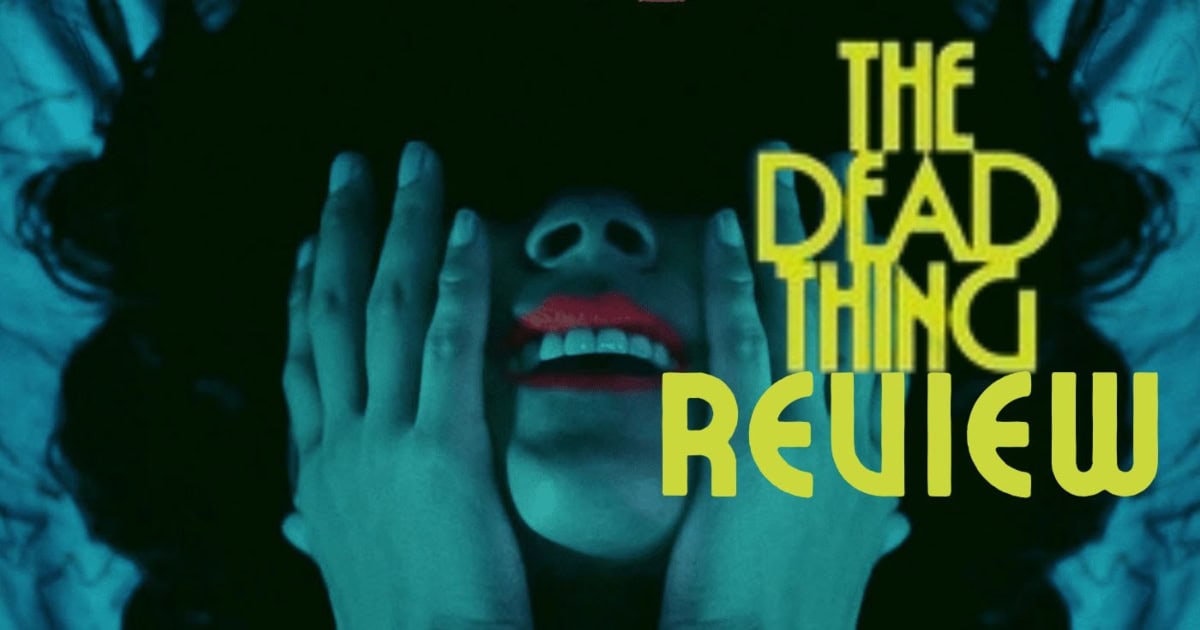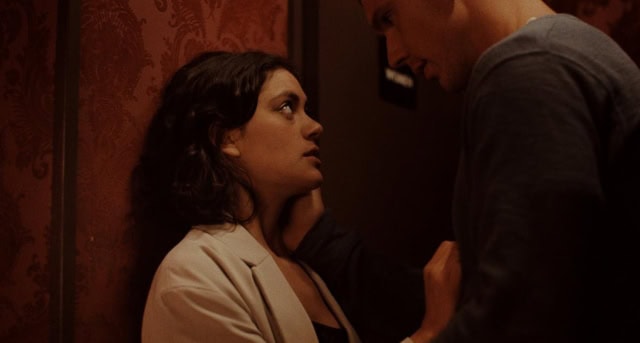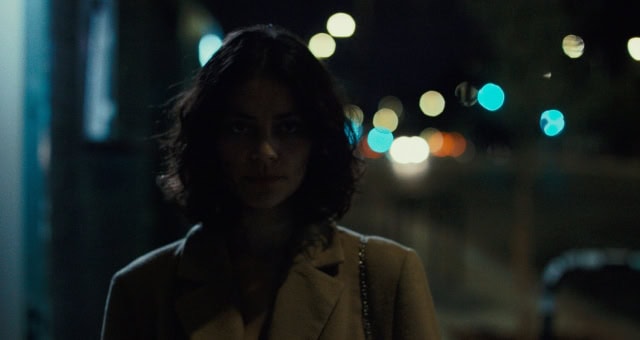‘The Dead Thing’ Review: Tinder-ized Surreal Horror

The Dead Thing might be dropping on Shudder during the Valentine’s Day weekend, but the new film by Elric Kane is hardly a standing ovation to the idea of romance. One might even call it cynical. In the age of loneliness and swipe culture, the need for connection feels more urgent than ever, causing the slightest bit of rejection to feel amplified, especially if feelings accidentally get involved.
Kane’s movie wrestles with these ideas, but not in a blatant way. The film is an abstract exploration of the grief inherited by one troubling relationship or a single unfortunate date—more so, one fantastic date that inexplicably leads nowhere.
What is The Dead Thing about?
The film centers on Alex (Blu Hunt), a woman who lives a numb existence, working by day and seeking casual hookups on a dating app called Friction by night. Most of her encounters are implied to be emotionless, especially when she blocks a fling from following up with her on text. Alex’s routine maintains a steady cycle of dead-end work and dead-end romances until she meets Kyle (Ben Smith-Petersen).

Kyle is the dream catch, saying all the right things with radiant charm. His smile and words could make a Nicholas Sparks novel melt like butter, and on their first date, they stay together talking all night. As the morning comes, Alex has butterflies, and Kyle seems equally smitten. They depart from one another with great hopes of what might come next. However, the next day, Kyle stops responding and seems void of all communication.
But even more perplexing, when she finally finds Kyle, he doesn’t remember her. Did the night happen at all? Is Kyle being sincere about his amnesia? And while this would be a tremendous mystery on its own, the script by Kane and Webb Wilcoxen adds another layer of surrealness to the mix.
Elric Kane steps into similar avenues as I Saw the TV Glow
The surrealness of The Dead Thing shares a familiar vibe exhibited in Jane Schoenbrun’s films, such as We’re All Going to the World’s Fair and I Saw the TV Glow, where the film itself often makes the viewer question whether the experience can be classified as horror. Both Glow and World’s Fair play with horrific concepts, but in unconventional forms that transcend the work from one genre. Like those films, The Dead Thing finds horror in the existing world while amplifying the surreal atmosphere.
For example, daytime is almost nonexistent throughout the movie except for a few scenes. Alex’s job seemingly only has two people in the entire office, and the entire floor gives the impression of a workplace getting ready to lock its doors at any moment. The environment is mostly empty, and most of the lights are off in the office space. Outside of work, when Alex meets someone at a bar, the establishments are occupied, but everyone in the physical space feels distant from her. One can see how her world is a reflection of the post-COVID loneliness.

The environment has a dreamlike heightened reality, which gives the viewer a sense of unease before the actual reality-spinning moments begin. The camera work and lighting also add to the lucid dream aesthetic. There is a terrific series of shots where Alex is bathing in a green fluorescent light, giving her skin tone a zombie-like appearance. However, the real meat worth chewing is how The Dead Thing discusses the modern world of dating and the heightened insecurities of internet romances.
The Dead Thing on Shudder is about the lasting grief of heartbreak
On the surface, The Dead Thing has the appearance of a movie that requires more clarity, but various details are intentionally withheld, so the viewer can fill in the gaps. When discovering the pieces, one will find a fascinating commentary about the shallowness of modern dating culture. The script touches on the trauma that can result from ghosting someone, especially if the person being ghosted genuinely possessed feelings. The same is true of a lasting relationship which tragically fell apart. In both scenarios, the pain and insecurity can sometimes carry into the next relationship or cause depression.
The movie will challenge some mainstream audiences because of the abstract nature of Kane and Wilcoxen’s screenplay. It’s a film in need of further discussion and dissection before making any final impressions. The Dead Thing represents the pain carried when trying to move forward. It’s relatable because we all, in some form, have felt the agonizing feeling that follows after rejection, heartbreak, or a massive breakup.
It’s not a perfect film, and some aspects could have been fleshed out more. Still, for an atmospheric horror film about modern-day romances made with an independent spirit, The Dead Thing certainly has life.
Are you going to check out The Dead Thing on Shudder this weekend? Let us know what you think on social media @mycosmiccircus or @TheCosmicCircus.com on Bluesky!


